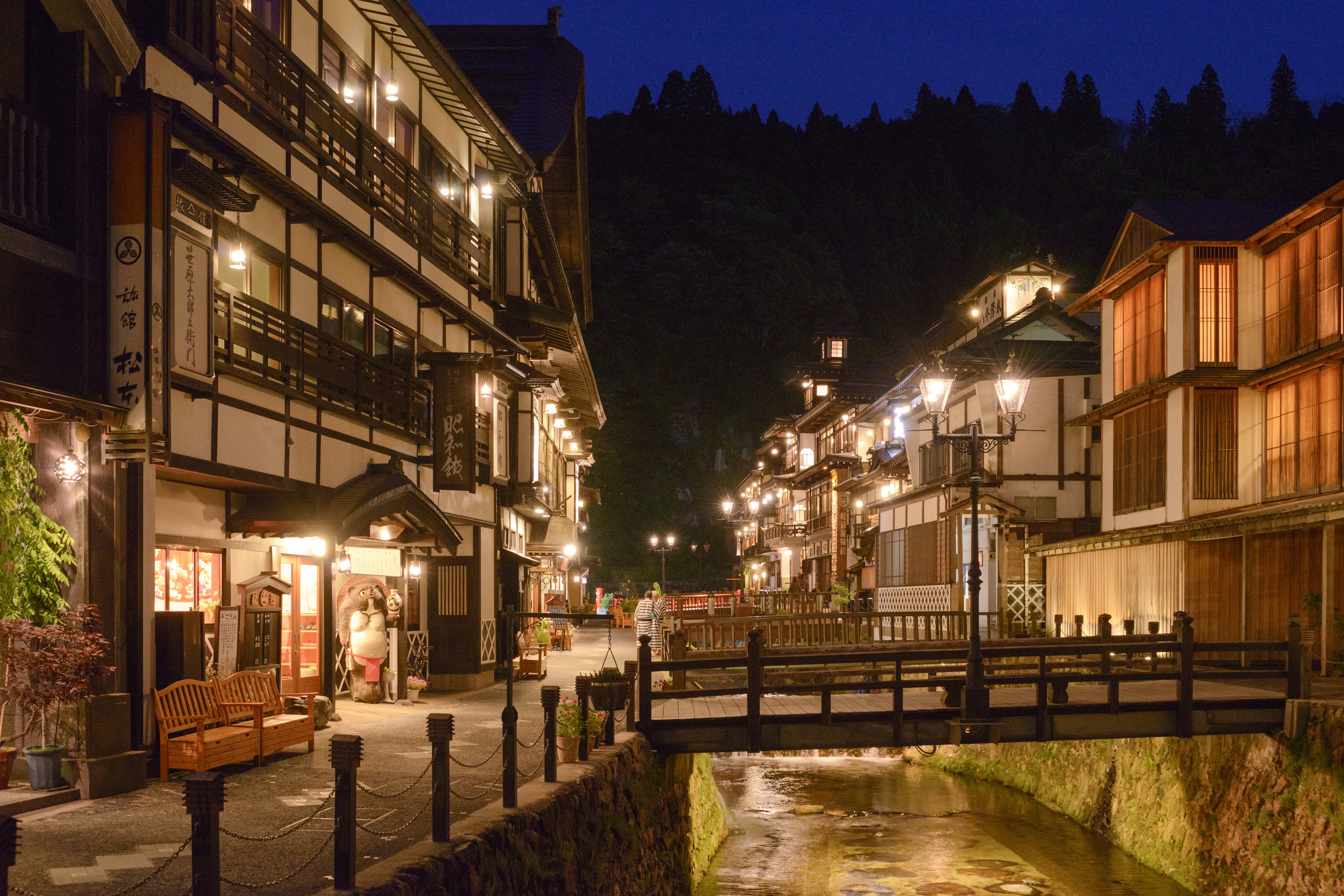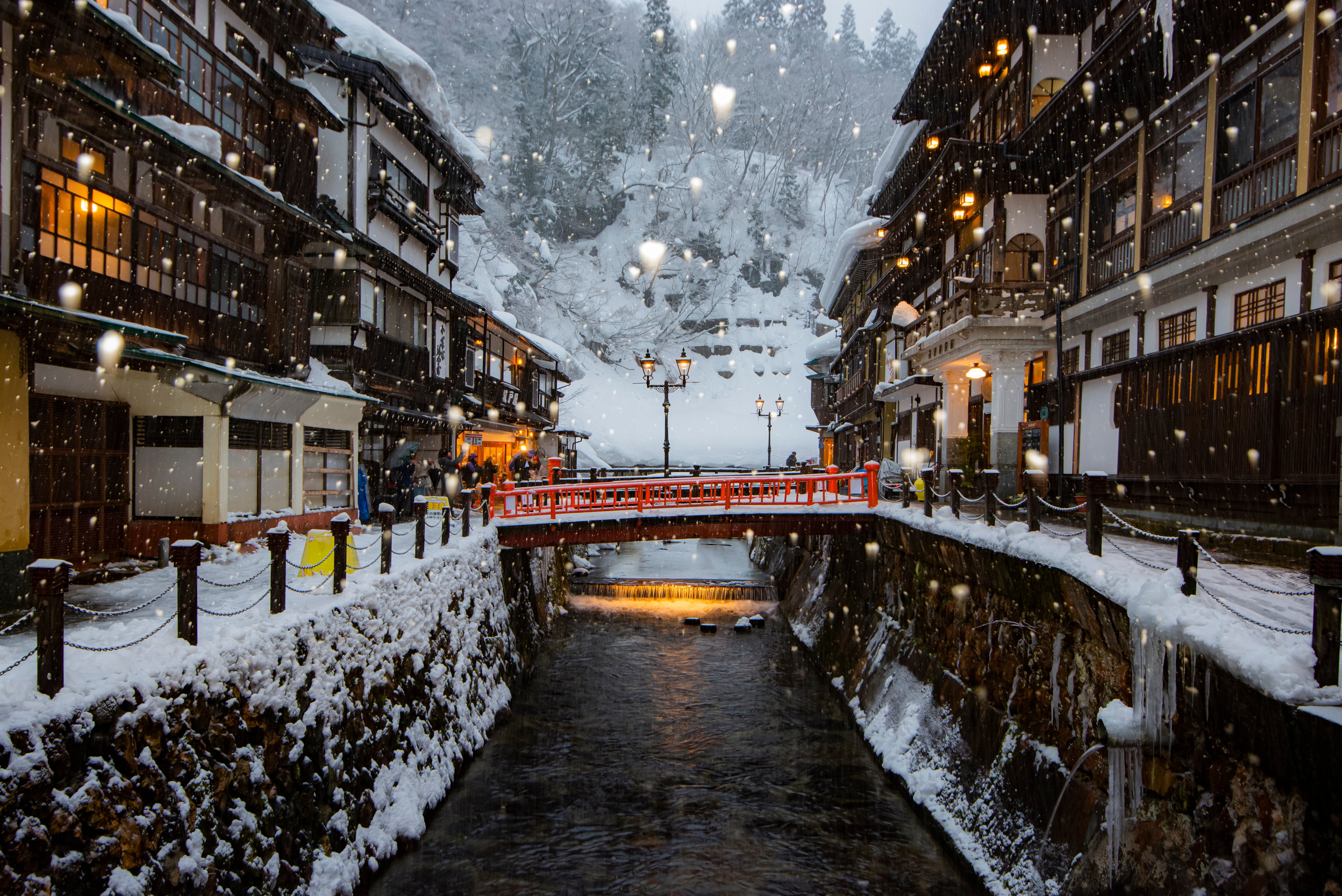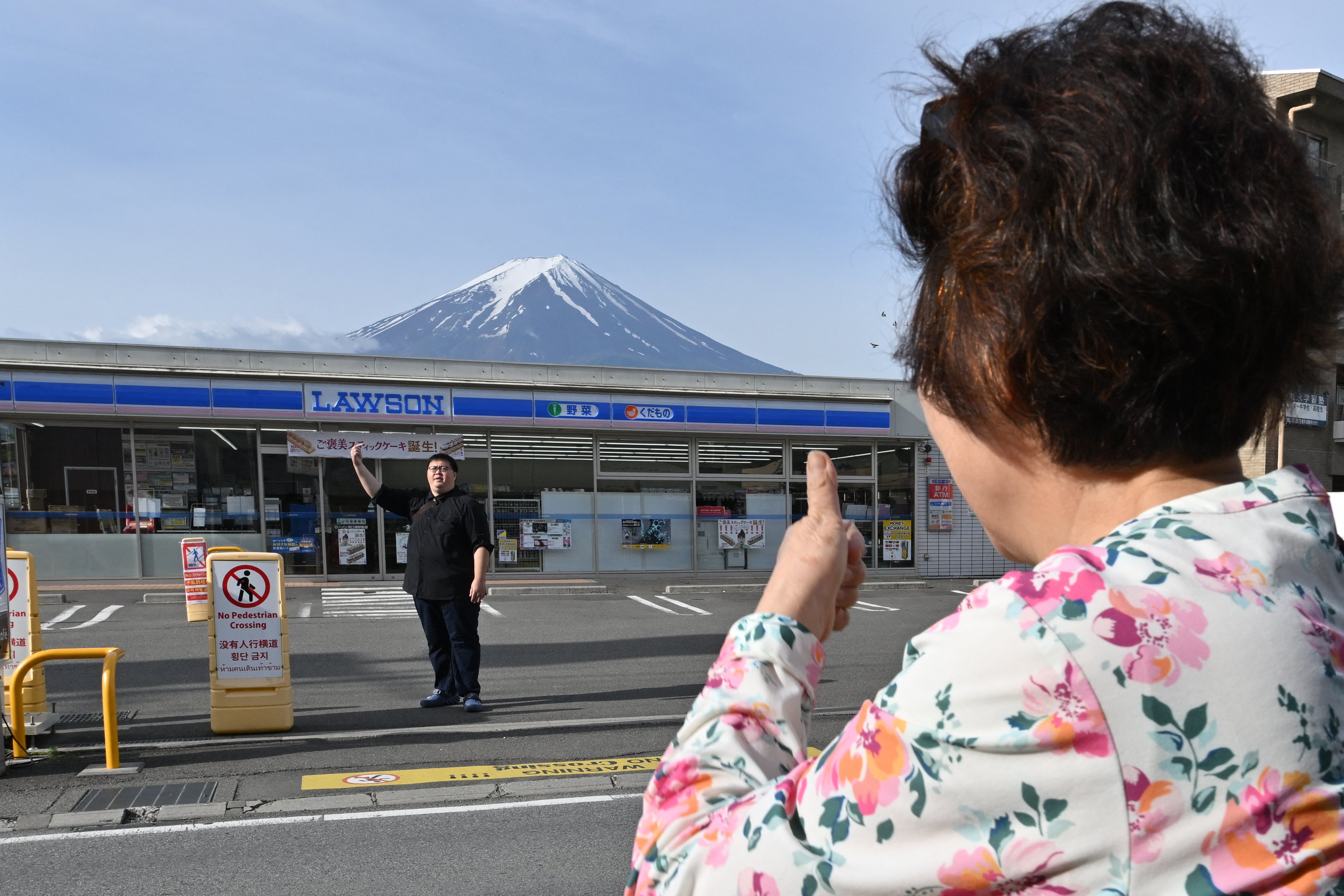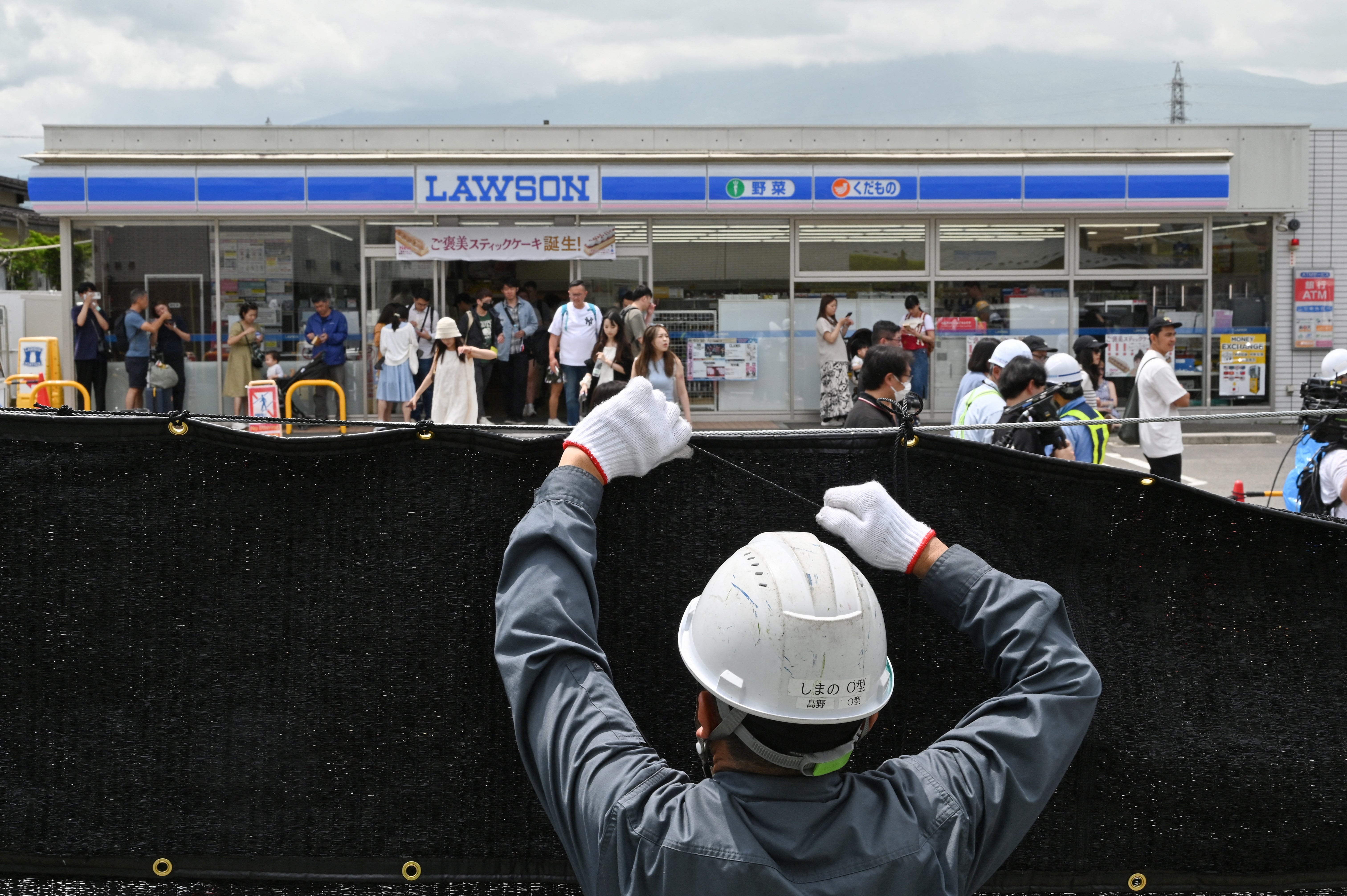A Japanese hot spring town popular with tourists is limiting entry to daytrippers during the peak winter season in a bid to tackle overtourism.
Japan saw a record number of visitors last year.
Ginzan Onsen, a remote town in the mountains of the northern Yamagata region, is known for its hot springs and fairytale winter views. It’s also famed for the rows of classically styled Edo-period wooden ryokan, or traditional inns, draped in snow and lit softly by street lamps.
The town’s idyllic charm and picturesque location have led many to believe it inspired auteur Hayao Miyazaki’s Oscar-winning film Spirited Away—which contributes to the 330,000 visitors Ginzan Onsen sees every year.
Onsens are natural geothermal water sources, rich in minerals, that have been utilised in Japan for centuries for their therapeutic health benefits.
The popularity of the 300-year-old town has, however, created problems for locals as the once-serene atmosphere is disrupted by the demands of an ever-growing influx of travellers.
A significant portion of the problems are attributed to daytrippers, tourists who visit the town for a few hours, usually during peak times, without staying overnight.

Altercations over popular photo spots are common, with tourists jostling for prime spots in the small town that was never designed to accommodate crowds of this magnitude.
“Traffic jams have sometimes been caused by cars getting stuck in the snow, because travellers were driving with normal tyres” instead of snow tyres, Takayuki Saito, head of commerce and tourism for the municipality of Obanazawa, told AFP.
According to Ginzan Onsen’s website, traffic congestion from daytrippers’ cars has become so severe that ambulances have, at times, been unable to reach emergencies, forcing personnel to run to the scene.

Local residents are also regularly subjected to verbal abuse by frustrated visitors, leading the town to make rules to alleviate overcrowding, reduce traffic congestion, ensure the safety of residents and tourists, and preserve the town’s tranquil beauty.
“Many guests became angry over good spots for the purpose of taking pictures, leading to traffic rules being broken, cheating, and making people seek better places and easier ways than others,” the town wrote on its website.
From 7 January, the Ginzan Onsen association is imposing strict rules limiting the number of daytrippers during peak hours. The rules will remain in place until the end of March.
There will be no restrictions on tourists between 9am and 4pm. But between 5pm and 8pm, only 100 day trippers will be allowed in the town, as long as they have a confirmed ticket or a reservation to enter Ginzan Onsen, which can be purchased in advance on the town’s website.
Failure to produce a ticket will result in the tourist being asked to leave post 5pm, and only tourists staying in a local hotel will be allowed to enter after 8pm.

The town is also instituting parking rules starting February. The rules state that daytrippers driving themselves to the town can only park at a designated spot around 2km away from the area with the hot springs and can avail of a paid shuttle bus which will take them to and from the spot for ¥1,150 (£5.87) per person.
In Japan, onsen tourism plays a crucial role in local economies. Towns and resorts are centred around hot spring facilities that draw millions of visitors, domestic and international, annually. Onsen tourism also provides jobs in hotels, ryokan, restaurants, and other service sectors.

Japan saw a record number of visitors last year. It received 33.38 million foreigners between January and November, surpassing the previous high of 31.88 million from 2019. The surge has been attributed in major part to a weaker yen which has made Japan more attractive to international tourists.
The soaring numbers, however, have sparked concerns about “overtourism” at popular destinations, leading the country to institute strict measures to protect its cultural and natural heritage.
New rules for climbing the iconic Mount Fuji required mountaineers to reserve spots online or in person and pay an increased fee of 2,000 yen (£10) each. In Fujikawaguchiko, a town known for stunning views of Mount Fuji, a large black screen was erected in a parking lot to deter tourists from overcrowding the Instagram-popular site.
Officials in Kyoto’s popular Geisha district decided in April to ban “paparazzi” tourists who harass and trouble the globally recognised Japanese women artists.







